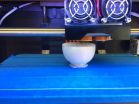(Press-News.org) HANOVER, N.H. - If you're a college student wondering how your study and party habits will affect your GPA, wonder no longer. Dartmouth researchers and their colleagues have built the first app that automatically predicts college students' grade point average based on their smartphone data.
The findings offer new ways to improve students' performance, providing real-time feedback on their studying, partying, sleeping, exercising and other conscious and unconscious behaviors to help them stay on track academically.
Dartmouth computer science Professor Andrew Campbell, senior author of the SmartGPA study, will present preliminary findings on May 27 in a keynote address at the International Conference on Web and Social Media (ICWSM-15) in Oxford, England. The full findings will be presented Sept. 7-11 at the ACM International Joint Conference on Pervasive and Ubiquitous Computing (UbiComp 2015) in Osaka, Japan.
The SmartGPA app builds on the researchers' earlier StudentLife study, which created the first smartphone app that automatically reveals college students' mental health, academic performance and behavioral trends.
A PDF of the SmartGPA study and a short video are available here. A PDF of the StudentLife study is available here. Further information on both the SmartGPA and StudentLife projects is available here.
"Many cognitive, behavioral and environmental factors impact student learning during college," says Campbell, senior author of both the SmartGPA and StudentLife papers. "Our SmartGPA results show there are a number of important study and social behaviors automatically inferred from smartphone sensing data that significantly correlate with term and cumulative GPA."
The researchers installed the SmartGPA app on the smartphones of 30 Dartmouth undergraduate students and monitored them across a 10-week academic term. The app uses automatic sensing data on the phone and in the cloud and machine learning algorithms around the clock to infer higher level behaviors, including partying (frequency and duration) and studying (duration and focus). It also tracks behavioral changes for the students, such as class attendance, sleep, physical activity and sociability (i.e., face to face conversation and indoor and outdoor mobility). The app works behind the scenes with no user input.
The results show the app, along with periodic self-reports from students, can predict their GPA within 17 hundredths of a point against their cumulative GPA from their transcripts. The results are statistically significant even for a small cohort. The computational model uses no prior knowledge of students' academic performance, such as SAT scores and IQ.
The findings show that the most predictive behaviors between higher and lower performers are:
Higher performers experienced an increase in stress levels up to the midterm period followed by a gradual decrease to the end of the term;
In terms of sociability (i.e., the amount of face to face conversations), higher performers had shorter conversations during the early evening and night later in the term;
As the term proceeded, higher performers spent more time studying;
High performers were more conscientiousness about their behavior;
High performers had higher levels of positive mood at the end of term.
"College life is complex," Campbell says. "Students have to balance going to classes and performing well academically with competing demands for their time and energy, but there is no general agreement on why students with similar academic capability at the same institution do better or worse than one another. Furthermore, it is not clear which behavioral patterns significantly contribute to the individual differences in the academic achievement among students.
"In our previous StudentLife study, we used simple averages of all student behaviors over the term and presented a number of correlations with performance based on this approach. The SmartGPA study goes much deeper in our analysis of academic performance and proposes time series analysis of each student's data streams to best understand the individuals' differences between high and low performers. As part of our analysis, we proposed novel methods to assess behavioral changes experienced by students and a simple model to predict GPAs with great accuracy."
INFORMATION:
Professor Andrew Campbell is available to comment at campbell@cs.dartmouth.edu.
SmartGPA was developed by researchers at Dartmouth College and the University of Texas at Austin.
Broadcast studios: Dartmouth has TV and radio studios available for interviews. For more information, visit: http://www.dartmouth.edu/~opa/radio-tv-studios/
BLOOMINGTON, Ind. -- Air pollution regulations issued by the U.S. Environmental Protection Agency are estimated to save thousands of lives annually. A new study by researchers at Indiana University says these estimates are more uncertain than commonly believed.
Researchers Kerry Krutilla, David H. Good and John D. Graham of the IU School of Public and Environmental Affairs analyzed the costs and expected lifesavings of nine regulations issued between 2011 and 2013. The bulk of these regulations require national emissions standards for hazardous air pollutants. The analysis ...
PITTSBURGH, May 26, 2015 - Researchers at the University of Pittsburgh School of Medicine have identified two new classes of RNAs that are closely associated with a protein known to be a prognostic biomarker for breast cancer and could play a role in progression of prostate cancer. Their findings were published in the June issue of the scientific journal RNA.
Levels of human Y-box binding protein 1 (YB-1), which is involved in many cellular functions, have been shown to correlate with drug resistance and poor patient outcomes in a variety of cancers. The observation that ...
When Walt Disney created Mickey Mouse, he didn't give much thought to how he might bring his character to life in the real world. But robotics now puts that possibility within reach, so Disney researchers have found a way for a robot to mimic an animated character's walk.
Beginning with an animation of a diminutive, peanut-shaped character that walks with a rolling, somewhat bow-legged gait, Katsu Yamane and his team at Disney Research Pittsburgh analyzed the character's motion to design a robotic frame that could duplicate the walking motion using 3D-printed links and ...
College Park, Md and Annapolis, Md -- A new study from researchers at the University of Maryland (UMD) and the National Socio-Environmental Synthesis Center (SESYNC) demonstrates that the highly contentious debate on climate change is fueled in part by how information flows throughout policy networks.
The UMD and SESYNC researchers found that "echo chambers"--social network structures in which individuals with the same viewpoint share information with each other--play a significant role in climate policy communication. The researchers say that echo chambers may help ...
Ask any molecular plant biologist about RNA extractions and you might just open up the floodgates to the woes of troubleshooting. RNA extraction is a notoriously tricky and sensitive lab procedure. New protocols out of the University of Florida are quicker, more effective, and more reliable than previous methods.
"Obtaining pure and intact RNA samples is essential for sequencing the active genes, or the transcriptome, of a plant," explains botanist Ingrid Jordon-Thaden, who developed the protocols.
The protocols are given in bench-ready form with detailed notes and ...
Adam C. Levine, M.D., an emergency medicine physician at Rhode Island Hospital found that the World Health Organization's current weight-based guidelines for assessing malnutrition in children with diarrhea are not as reliable as measuring the child's upper arm circumference. His research was published in the Journal of Nutrition.
Diarrhea is common among children who visit health facilities in developing nations. The traditional measures for determining whether a child is moderately or severely malnourished are based on assessing the child's weight directly. Levine found ...
Old-school field work meets cutting-edge technology! For decades, researchers have been making artificial eggs out of plaster, wood, and other materials to test how birds identify and reject the eggs that invading "brood parasites" sometimes sneak into their nests. But these methods have many limitations, and a new study published in the open-access journal PeerJ is the first to test the usefulness of 3D printed eggs for research on egg rejection.
Brood parasites are birds that don't build nests of their own. Instead, they slip their eggs into the nests of other species, ...
Scientists at the Molecular Medicine Institute in Lisbon, Portugal, and at the University College London Ear Institute, United Kingdom, have developed a simple and efficient protocol to generate inner ear hair cells, the cells responsible for our hearing and sense of balance. This study is an important step for the future production of large numbers of these cells for use in cell transplantation therapies or large-scale drug screens. The research has just been published in the scientific journal Development at http://dev.biologists.org/.
Sensory hair cells located in ...
COLUMBUS, Ohio - If you're watching television while using a second screen - like a smartphone or tablet - new research suggests that some of the most expensive marketing messages aimed at you are missing their mark.
While the trend of "second screen" use has become pervasive, this is the first study to show that viewers have trouble recalling brands they see (or hear) on TV if they're using such devices.
"Viewers don't even remember that your brand was there on TV because they were busy posting on Facebook or Twitter or reading email," said Jonathan Jensen, who led ...
Irvine, Calif., May 26, 2015 - The Millennium Drought in southeastern Australia forced Greater Melbourne, a city of 4.3 million people, to successfully implement innovations that hold critical lessons for water-stressed regions around the world, according to findings by UC Irvine and Australian researchers.
It wasn't a new pipeline over the mountains, special rate hikes or a $6 billion desalination plant that kept faucets running. Rather, integrated outreach by utilities and agencies required to work together led to a culture shift among ordinary water users, according ...

